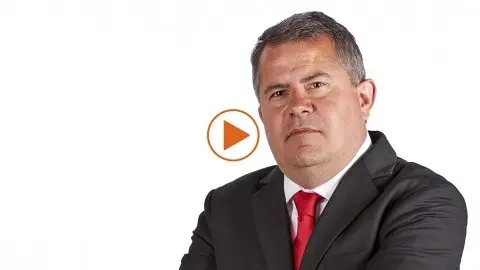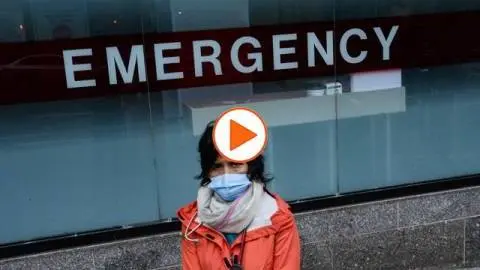The biggest plumbing bill, ever
The Fed has piped the financial system with a myriad of mechanisms in recent weeks. We break these down and make sense of what is on the mend, and what could lie ahead. The clearest barometer of success would come from a fall in Libor, which remains elevated. April is an important month as the Fed's various SPVs kick into gear. Libor should fall. But then again ...
Why Libor is an important barometer of stress
The risk-free rate in the US is zero, in fact, it now peppers frequently into negative territory. In contrast, Libor is at 1.4%, which is a problem, as it flags an elevated implied bank risk. Its elevation is in part a reflection of default risks that lie ahead, and especially as the veneer of exceptional government and central bank supported is eventually lifted. Many of the Fed measures have September as a preliminary end date. When those get lifted, many businesses will find that the world has changed for them.
But the elevation in Libor is not all about default risk. It also reflects implied pressures coming from other aspects of plumbing in the financial system.
How the stress built despite the Fed's massive QE program
The Fed did two things very early at the beginning of the outbreak of the pandemic.
It slashed rates to the floor (zero) and set in motion a massive bond-buying program in play (QE). This was a blanket reaction, which slashed the cost of liquidity and showered the system with lots of it. And this is a permanent liquidity addition. The Fed buys bonds from investors and credits them with cash, which then show up as reserves in the banking system. There are no winners or losers here. Rather there is an increase in the Fed’s holdings of bonds and an increase in reserves in the system.
This is great, but there is a problem. Those reserves can in fact just sit there without being employed.
As the lockdown began to bite, many problems began to brew. Many of these problems revolved around getting access to liquidity, even though by definition there has never been as much liquidity available, ever. One of the first signs of pressure came from corporates that needed to get access to liquidity to fill gaps that had emerged due to the shutdown. They then drew on bank credit revolvers which placed some pressure on banks to supply liquidity. Typically this is not a big issue, provided there is not a call from every corporate at the same time. But there was a bit of that in play.
Many of the systemic problems revolved around getting access to liquidity, even though by definition there has never been as much liquidity available, ever
Many corporates needed more liquidity than revolvers or other sources could supply, and chose to liquidate some of their holdings in money market funds. The same logic holds here; this typically should be fine. But not if all done at once.
Money market funds then needed to find liquidity in order to meet a wider outflow trend, which would threaten a gates and fees freeze of the funds if the outflows became severe. This had to be prevented. Very easily, the dominos could have started to fall. The financial system is very interlinked, and each of these steps required attention, literally within days of the shutdown.
How the Fed began plumbing the system
Enter the Fed with a series of key facilities.
First, a backstop for money market funds where they could get access to liquidity from banks, and done in a way to minimise regulatory complications from the banks perspective. Money market funds could effectively tap into the liquidity that was being made available to the banking system, where banks could sponsor out a part of their balance sheet to be employed by money market funds that required liquidity to facilitate orderly outflows when they occur.
Complicating the picture was a virtual shutdown of other sources of liquidity, and crucially from primary market issuance of new securities to the marketplace
That available liquidity is bolstered by an ongoing Fed repo facility that allows prime banks to post as much collateral as they like for as much liquidity they want. In addition, the Fed has made available a credit facility specifically for prime lenders, with a view to ensuring there is ample access to liquidity for the wider economy.
But just as one issue was addressed, more appeared, often simultaneously.
Complicating the picture was a virtual shutdown of other sources of liquidity, and crucially from primary market issuance of new securities to the marketplace. Critically, corporates found that they were locked out from issuing commercial paper. This is important, commercial paper programs are a corporate's easiest access to ongoing liquidity. With the commercial paper market shut, there was then additional pressure on bank revolvers and money market fund liquidations. And on it goes.
This was rapid-fire stuff from the Fed, all aimed at keeping the system afloat, while in the background equity markets were crumbling and high yield credit spreads exploding
With this in mind, the Fed set up a special purpose vehicle (SPV) to help fund issuers of commercial paper. The price of that was set at the risk-free rate plus 110bp, and 200bp for lower-rated players. Then the Fed overlayed this with a primary market corporate credit facility where a Fed SPV could either lend direct to corporates or buy corporate bonds, effectively as a private placement. And the Fed also added a secondary market element, where corporate bonds could be bought for maturities of up to five years.
This was rapid-fire stuff from the Fed, all aimed at keeping the system afloat, while in the background equity markets were crumbling and high yield credit spreads exploding.
Reasons for optimism, but stresses continue to crop up
This is a remarkable set of measures and massive but focused liquidity support. They were a big reason for the improvement in conditions seen a couple of weeks ago. Things have deteriorated since, but more on account of a changing market discount with respect to when the shutdown ends, and its long term impact.
As this played out, there were other wrinkles evident in the system. Mortgage REITs saw margin calls as mortgage-backed bonds come under widening pressure
One issue here however is that these three SPVs are not fully up and running as of yet. The knowledge that they will very soon does provide an important element of support. Until they do, however, the pressure remains elevated for both the banks and corporate credit spreads. And that in part explains why Libor has not shown a material fall (although it has at least stopped rising).
As this played out, there were other wrinkles evident in the system. Mortgage REITs saw margin calls as mortgage-backed bonds come under widening pressure, and many such REITs had to scramble for cash in order to make such calls. The Fed reacted in part by starting to buy mortgage-backed bonds, as part of their bond buying QE programme. It became increasingly evident that when the Fed came in with a new programme, there was most likely some significant stress front running this.
The off-shore dash for dollar liquidity
And there was also frantic dash for dollar liquidity from off-shore accounts in play. The dollar began to command a dramatic premium, so getting access to it became even more expensive. This manifested in an increase in the basis (extra cost) attached to $Libor for players that wanted to swap from their own domestic currencies, like the euro or yen etc for dollars. To help ease this pressure, the Fed provided FX swap lines to other central banks so that off-shore dollar liquidity could be enhanced. This worked well.
In addition, the Fed provided a repo facility for global central banks and other monetary authorities. This helped to take the pressure off central banks that had been selling dollar reserves in order to get access to dollar liquidity. Instead, those central banks could post bonds at the Fed in exchange for dollar liquidity on a rolling 1-day basis. It also means that central banks that did not have access to the Fed’s FX swap line could in the vast majority of cases have access to this repo facility.
And now we have an alphabet spaghetti of support
In addition, straight from its great financial crisis playbook, the Fed re-established support to enable the issuance of asset-backed securities backed by student loans, auto loans, credit card loans etc. In recent days, the official sector has been talking about support for the main street, and specifically the provision of credit support for small and medium-sized businesses. This last one is an important one given the stress seen in the small business sector in particular.
Phew, if you have made it this far then know that we have covered the following:
MMLF – Money Market Mutual Fund Facility
CPFF – Commercial Paper Funding Facility
PMCCF – Primary Market Corporate Credit Facility
SMCCF – Secondary Market Corporate Credit Facility
PDCF - Primary Dealer Credit Facility
TALF – Term Asset-Backed Securities Loan Facility
And on top of that are the other facilities such as the Fed’s Repo window for primary dealers, the Discount window for wider financials, the Repo facility for central banks the, Fed’s QE in Treasuries and mortgage-backed securities, and finally another credit aimed at main street which is imminent.
The numbers are huge
All of this should ease the pressure in the plumbing and in markets generally.
The alphabet of lending facilities above could easily end up being in the region of $0.5trn to $1.5trn apiece. The Fed’s QE is already in excess of $5trn and other liquidity avenues could easily cumulate to in excess of $1trn. US GDP was $22bn at end 2019. Contextualised against that, these are huge in size and should be effective in terms of influence. They need to be though, as they plug massive gaps left from the lockdown.
Moreover, most of these are mere plasters of the wound. The long-term healing process is far from certain.
Libor should fall, but needs some signs of stability
Cumulatively, these facilities should at the very least contain Libor, and in fact, should be enough to slowly bring it off its highs. The month of April will tell us as the Fed’s SPV really kicks in.
The prognosis for high yield credit spreads is more troubled though, and that in turn is why any ease in Libor will be questioned and would be quite a tame if not pained retracement. We’d take that though.
Tags
RatesDownload
Download article
9 April 2020
Covid-19: The global battle continues This bundle contains 12 articlesThis publication has been prepared by ING solely for information purposes irrespective of a particular user's means, financial situation or investment objectives. The information does not constitute investment recommendation, and nor is it investment, legal or tax advice or an offer or solicitation to purchase or sell any financial instrument. Read more

